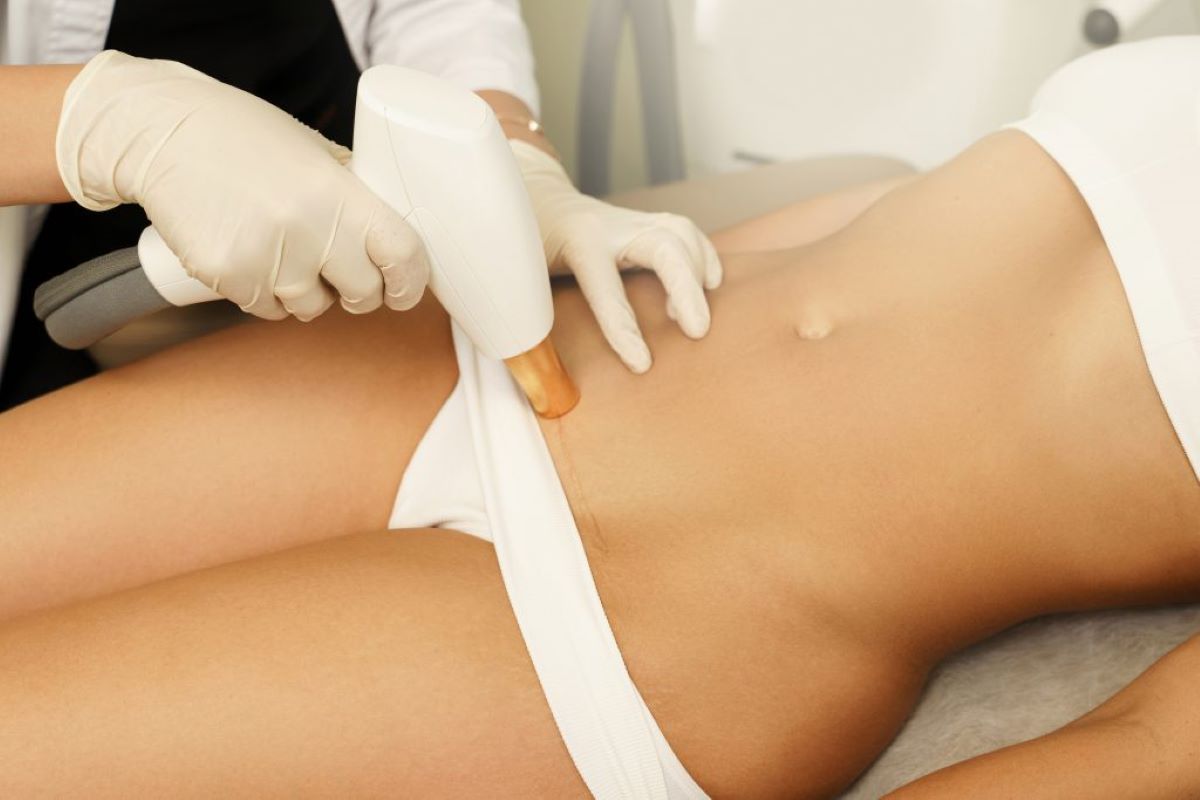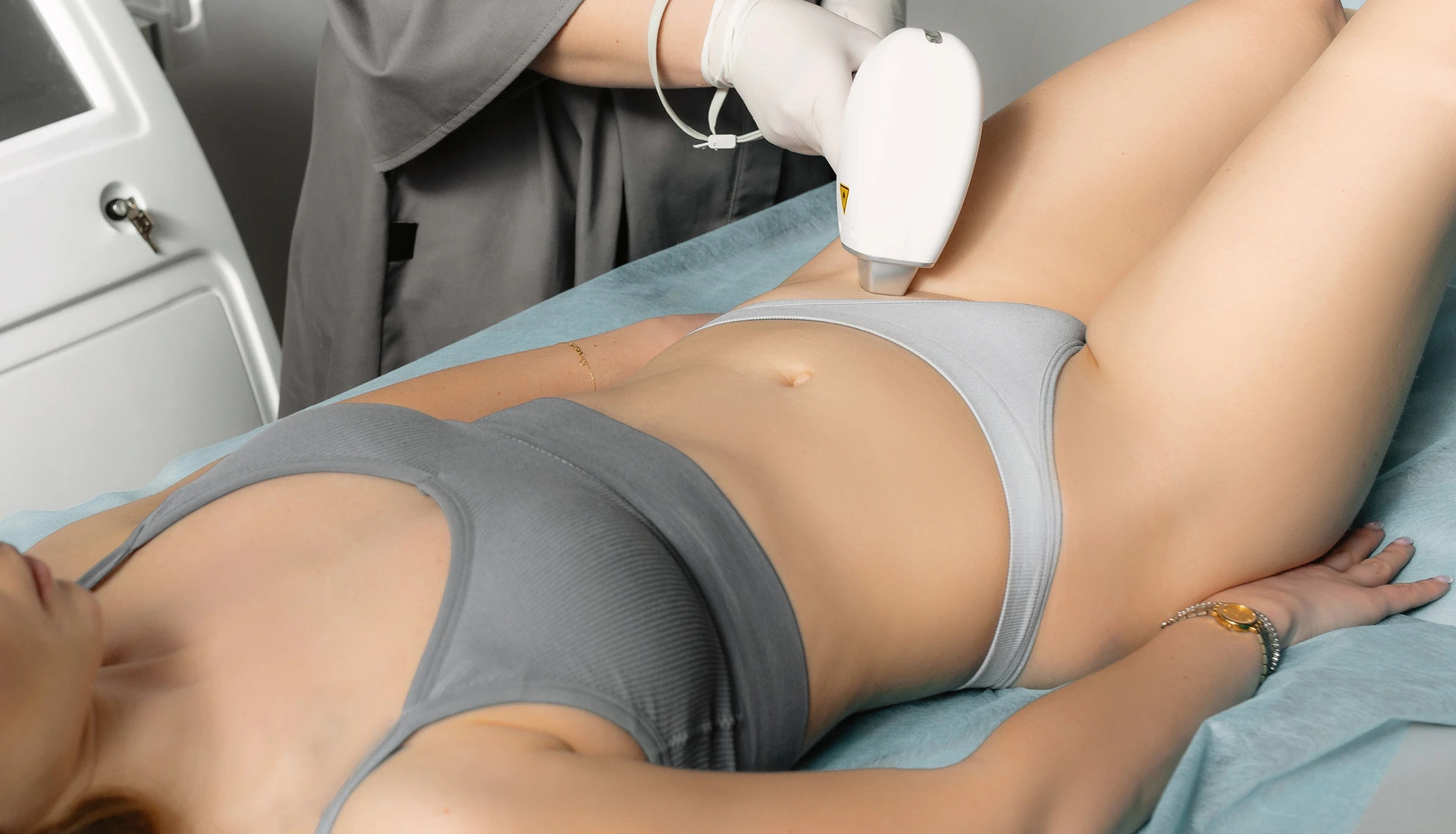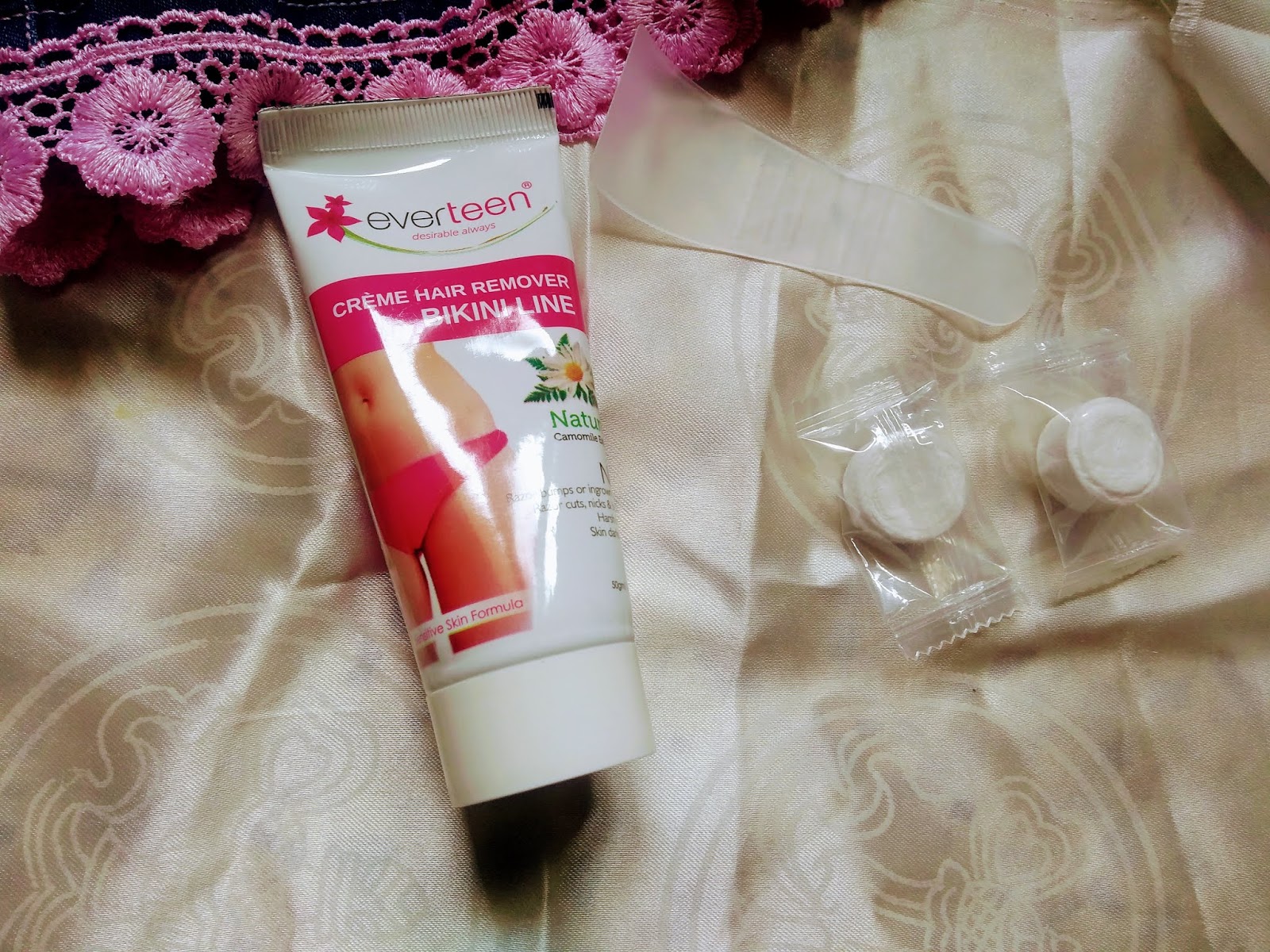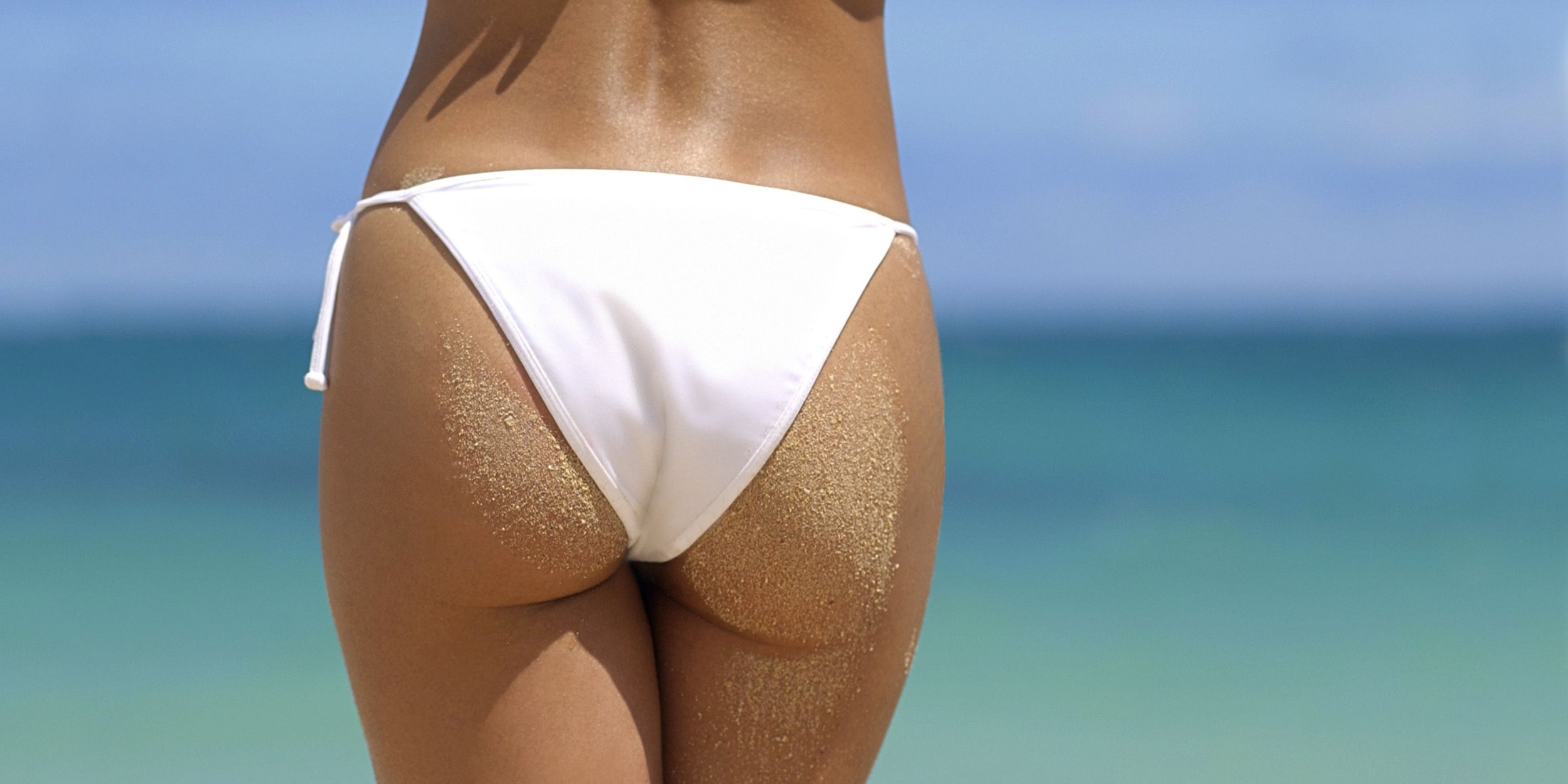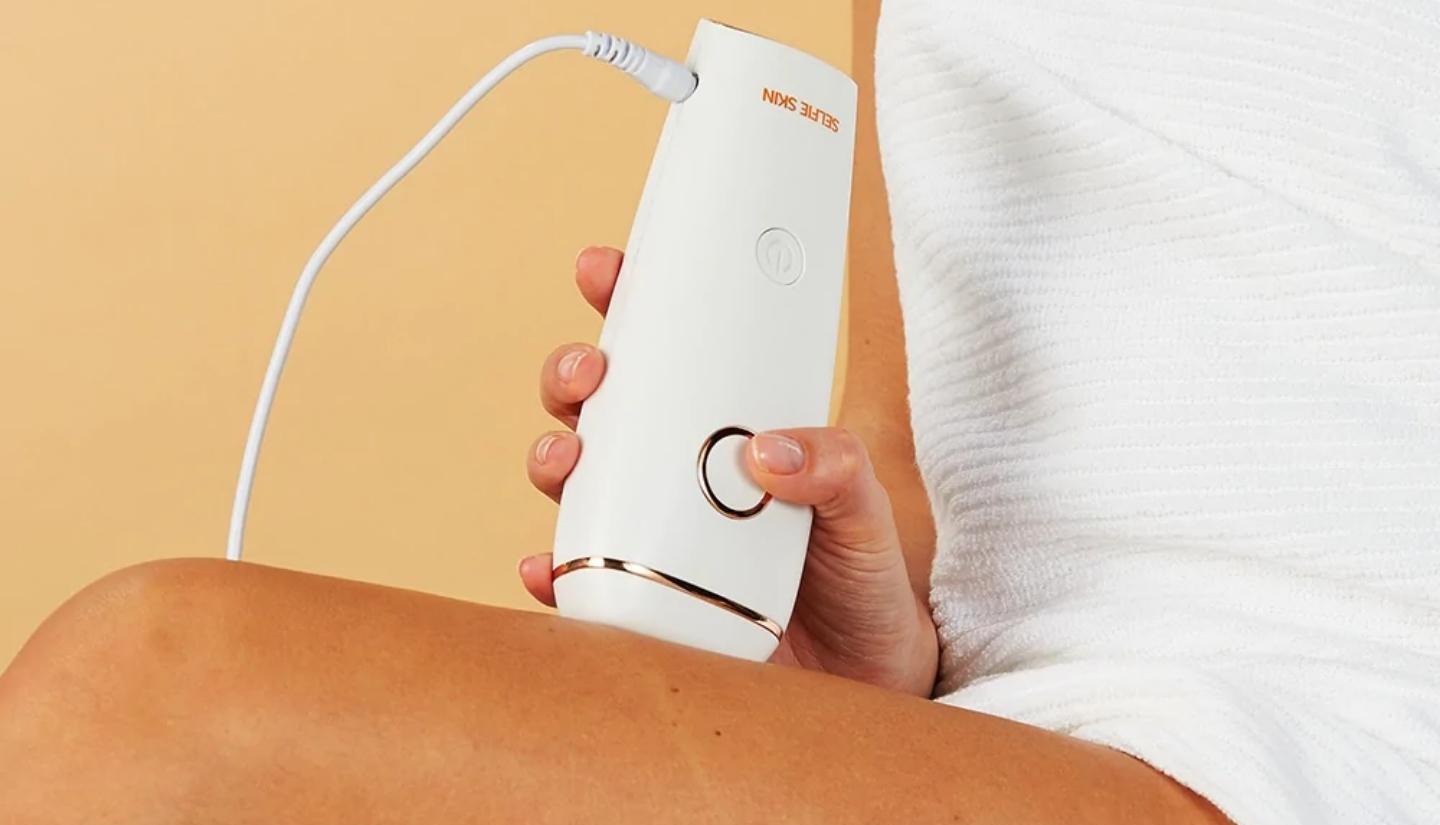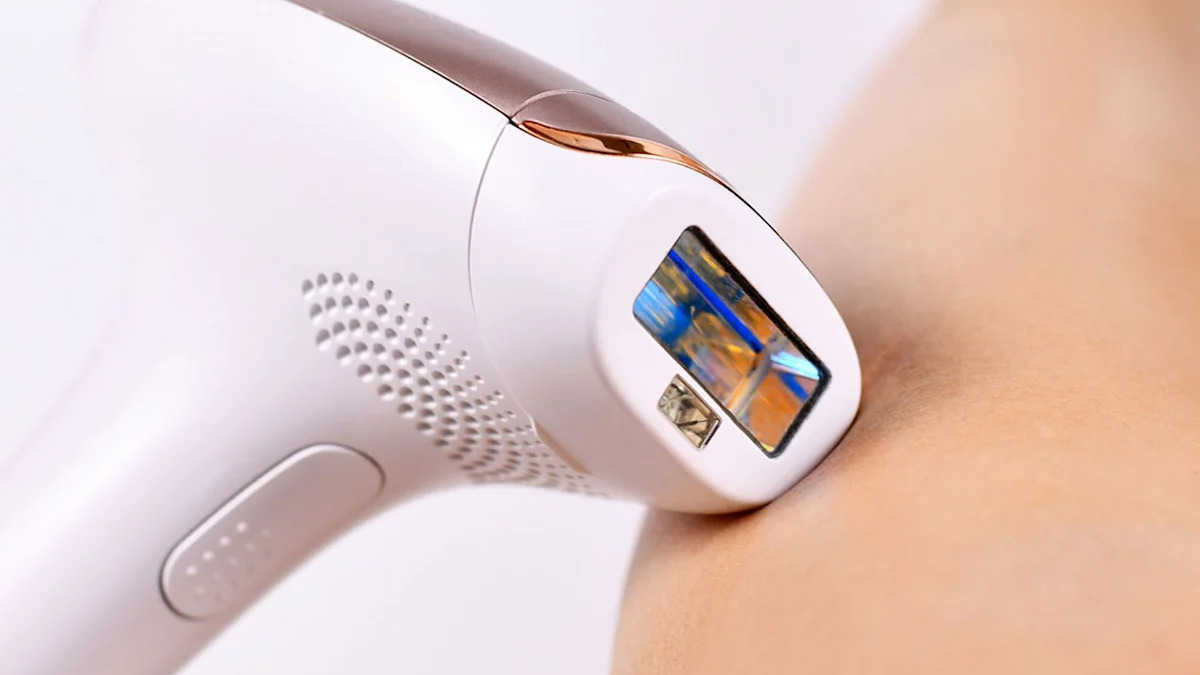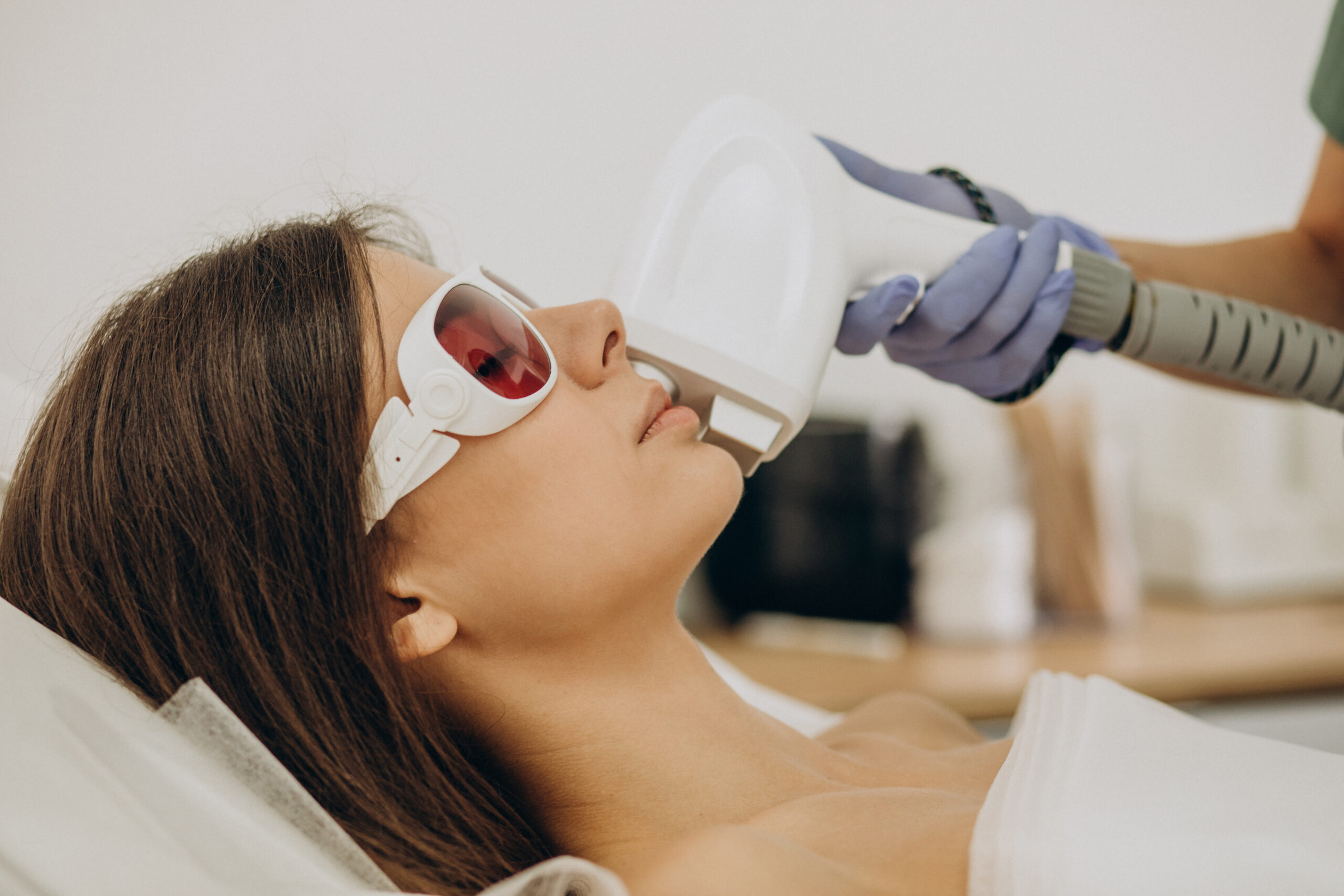Home>How-to Guides>For Women>How To Remove Bikini Hair Without Irritation


For Women
How To Remove Bikini Hair Without Irritation
Modified: August 5, 2023
Learn how to remove bikini hair without irritation. This guide is specifically designed for women, providing effective and gentle methods for a smooth and comfortable experience.
(Many of the links in this article redirect to a specific reviewed product. Your purchase of these products through affiliate links helps to generate commission for Under-tec.com, at no extra cost. Learn more)
Table of Contents
How To Remove Bikini Hair Without Irritation
When it comes to bikini hair removal, ensuring a smooth and irritation-free experience is essential. Nobody wants to deal with redness, bumps, or itching in such a sensitive area. Fortunately, there are several methods you can try to remove bikini hair without irritation. Read on to discover the best practices for a comfortable and effective hair removal process.
1. Exfoliate: Before hair removal, gently exfoliate the bikini area to remove dead skin cells and prevent ingrown hairs. Use a gentle scrub or exfoliating mitt in circular motions to smooth the skin.
2. Choose the right method: Different hair removal methods work better for different people. Consider your preferences and skin sensitivity when selecting the method that suits you best.
3. Shaving: Shaving is a popular and convenient method for bikini hair removal. Make sure to use a sharp razor and a moisturizing shaving cream or gel to reduce friction and irritation. Shave in the direction of hair growth to minimize the risk of ingrown hairs.
4. Trimming: If you prefer to keep some hair, trimming is a great option. Use small grooming scissors or an electric trimmer to trim the hair to your desired length. Be careful not to cut yourself.
5. Waxing: Waxing offers longer-lasting results but can be more painful. Make sure to choose a gentle wax formula specifically designed for sensitive areas. Test the wax temperature on a small area of skin before applying it to the entire bikini area. Pull the wax strip off in the opposite direction of hair growth for best results.
6. Sugaring: Similar to waxing, sugaring involves using a sticky paste made of sugar, lemon juice, and water. It’s a natural and less painful alternative. Apply the sugaring paste in the opposite direction of hair growth and remove it by flicking it off in the direction of hair growth.
7. Depilatory Creams: Depilatory creams can be an effective method for bikini hair removal. Choose a cream specifically formulated for sensitive skin and follow the instructions carefully. Test a small patch of skin before applying the cream to the entire area.
8. Laser Hair Removal: If you’re looking for a more permanent solution, laser hair removal can be a great option. It effectively reduces hair growth over time. Consult a professional for this method to ensure safety and best results.
Remember, regardless of the method you choose, there are general tips to minimize irritation. Always cleanse the area before and after hair removal, moisturize with a gentle lotion, and avoid tight clothing that may cause friction. If redness or irritation persists, consult a dermatologist for further guidance.
By following these tips and selecting the right method for your needs, you can achieve smooth and irritation-free bikini hair removal. Embrace your preferred method with confidence and enjoy the desired results without discomfort or irritation.
Introduction
Removing bikini hair is a personal choice that many women make for various reasons. Whether it’s for hygiene, aesthetic preferences, or comfort, finding the right method to remove bikini hair without irritation is crucial. Irritation in the sensitive bikini area can cause discomfort, redness, and even ingrown hairs. But fear not, as there are several methods and techniques available that can help you achieve a smooth and irritation-free bikini hair removal experience.
In this article, we will explore the different options for removing bikini hair effectively and with minimal irritation. From traditional methods like shaving and waxing to newer options like sugaring and laser hair removal, we will cover everything you need to know to make an informed decision.
Each method has its pros and cons, and the optimal choice will vary depending on your preferences, pain tolerance, and skin sensitivity. By understanding these different methods and considering your unique needs, you can choose the approach that works best for you.
Beyond the specific hair removal techniques, we will also discuss general tips and best practices to minimize irritation in the bikini area. From proper exfoliation and preparation to post-hair removal care, these tips will help you achieve a smoother and more comfortable outcome.
It’s important to note that everyone’s body is unique, and what works for one person may not work for another. It may take some trial and error to find the method that suits you best. Patience and persistence are key in order to find the right balance between effective hair removal and minimal irritation.
Now, let’s dive into the world of bikini hair removal methods and discover how you can achieve a hassle-free and irritation-free experience!
Understanding Bikini Hair Removal
Before delving into the various methods of bikini hair removal, it’s essential to understand the anatomy of the area and the different types of hair that grow there. The bikini area refers to the region that is covered by typical swimwear or underwear. It includes the pubic area, the area around the labia, and the crease between the thigh and groin.
There are two types of hair that typically grow in the bikini area: vellus hair and terminal hair. Vellus hair is short, fine, and typically light in color. Terminal hair, on the other hand, is thicker, darker, and coarser. The amount of terminal hair in the bikini area can vary significantly from person to person.
There are several reasons why individuals choose to remove bikini hair. Some do it for personal hygiene, as removing hair can prevent the buildup of sweat and bacteria in the area. Others opt for hair removal due to aesthetic preferences, as it can create a smoother and more streamlined look. Additionally, hair removal can reduce discomfort during activities such as swimming, exercising, or wearing tight clothing.
While there are many benefits to removing bikini hair, it’s important to note that there is no right or wrong choice. Each person should feel comfortable and confident in deciding whether or not to remove their bikini hair, and to what extent.
Understanding the unique characteristics of the bikini area and considering your personal preferences will help you determine the most suitable method for hair removal. It’s crucial to consider factors such as pain tolerance, sensitivity, desired appearance, and convenience when selecting a hair removal approach.
Now that we have a basic understanding of bikini hair removal and its motivations, let’s explore the various methods available to achieve a smooth and irritation-free bikini area.
Preparing for Hair Removal
Before diving into the process of hair removal, it’s essential to properly prepare the bikini area. Taking proactive steps to prepare the skin and hair will help minimize irritation and ensure a more effective hair removal experience. Here are some important tips to consider when preparing for bikini hair removal:
1. Cleanse the area: Start by thoroughly cleansing the bikini area with a gentle, pH-balanced cleanser. This will remove any dirt, oils, or sweat that may be present on the skin’s surface.
2. Exfoliate: Gently exfoliate the skin in the bikini area using a scrub or exfoliating mitt. This step helps remove dead skin cells and allows for a closer shave or better wax adhesion. However, be careful not to exfoliate too aggressively, as this can cause irritation.
3. Trim long hair: If the hair in your bikini area is long, it’s a good idea to trim it before proceeding with your chosen hair removal method. Use small grooming scissors or an electric trimmer to carefully trim the hair to a more manageable length.
4. Ensure dry skin: Make sure that your skin is completely dry before beginning the hair removal process. Excess moisture can interfere with the effectiveness of certain methods, such as waxing or sugaring.
5. Test for sensitivity: Before applying any hair removal product or undergoing a new method, it’s important to test for skin sensitivity. Apply a small amount of the product or method to a small patch of skin in the bikini area and wait for 24 hours to see if any adverse reactions occur.
6. Consider pain relief: If you know that you have a low pain tolerance or are particularly sensitive in the bikini area, consider using a topical numbing cream or taking an over-the-counter pain reliever before your hair removal session. This can help minimize any discomfort or pain associated with the process.
By following these preparation tips, you can create a suitable environment for hair removal and minimize the risk of irritation or discomfort. Remember, proper preparation is essential for achieving the best possible results and ensuring a more seamless hair removal experience.
Methods for Bikini Hair Removal
There are several methods available for bikini hair removal, each with its own benefits and considerations. Let’s explore some of the most popular methods:
1. Shaving: Shaving is a common and convenient method for removing bikini hair. With the right technique and tools, it can provide smooth results. However, the downside is that the hair grows back quickly, typically within a few days, and there is a risk of razor burn or ingrown hairs. Make sure to use a sharp razor, moisturizing shaving cream or gel, and shave in the direction of hair growth to minimize irritation.
2. Trimming: If you prefer to keep some hair in the bikini area, trimming is a simple and non-irritating option. Use small grooming scissors or an electric trimmer to trim the hair to your desired length. Be cautious when using scissors to avoid any accidents or cuts.
3. Waxing: Waxing provides longer-lasting results compared to shaving. It involves applying warm wax to the hair and quickly removing it, along with the hair, in one swift motion. Waxing can be painful, especially in sensitive areas, but the hair typically takes longer to grow back, and the regrowth is softer. It’s important to choose a wax formula specifically designed for sensitive areas and follow the instructions carefully to avoid burns or irritation.
4. Sugaring: Similar to waxing, sugaring involves applying a sticky paste made of sugar, lemon juice, and water to the hair. The paste is applied against the direction of hair growth and then flicked off in the direction of hair growth, removing the hair in the process. Sugaring is a more natural and less painful alternative to traditional waxing and can also lead to slower hair regrowth.
5. Depilatory Creams: Depilatory creams, also known as hair removal creams, work by breaking down the protein structure of the hair, allowing it to be easily wiped away. These creams are applied to the skin and left on for a specified amount of time before being wiped off. It’s crucial to choose a cream specifically formulated for sensitive areas and to perform a patch test prior to use, as some people may have adverse reactions or allergies to the ingredients.
6. Laser Hair Removal: If you’re looking for a more permanent solution, laser hair removal is an effective option. It involves using laser technology to target and destroy hair follicles, resulting in a reduction in hair growth over time. Laser hair removal should be done by a trained professional to ensure safety and optimal results. Multiple sessions are usually required to achieve long-term hair reduction.
It’s important to note that each method has its own considerations, such as pain level, cost, and maintenance. Consider your preferences, tolerance for discomfort, and desired level of permanency when selecting the method that best suits your needs.
Now that we’ve explored the different methods available, it’s time to dive deeper into each method to understand their specific techniques, pros, and cons.
Shaving
Shaving is one of the most popular and widely accessible methods for bikini hair removal. It offers a quick and convenient way to achieve a smooth bikini area. Here’s what you need to know about shaving:
Shaving involves using a razor to cut the hair at the skin’s surface. It’s important to choose a high-quality razor with a sharp blade to minimize the risk of irritation and cuts. Additionally, using a moisturizing shaving cream or gel will help reduce friction and provide a smoother glide.
Before shaving, make sure to cleanse the bikini area to remove any dirt or oils, and exfoliate gently to remove dead skin cells. This helps prevent the razor from snagging on the hair or causing irritation. You can also soften the hair by taking a warm shower beforehand, as this helps open up the hair follicles for an easier and closer shave.
When shaving the bikini area, it’s recommended to shave in the direction of hair growth to minimize skin irritation. Going against the grain may lead to ingrown hairs or razor burn. Take your time and use short, light strokes, rinsing the razor frequently to remove any hair and shaving cream buildup.
After shaving, rinse the area with cool water to soothe the skin and remove any remaining shaving cream. Pat the area dry gently with a clean towel and apply a gentle moisturizer to keep the skin hydrated. Avoid using any harsh products or fragrances that may cause further irritation.
While shaving provides smooth results, there are a few drawbacks to consider. First, the results are temporary, as the hair will grow back relatively quickly, typically within a few days. Additionally, some individuals may experience razor burn, itchiness, or ingrown hairs. To minimize these issues, make sure to use a sharp razor, moisturizing shaving cream or gel, and avoid applying too much pressure or shaving too closely to the skin.
Regular maintenance is required to keep the bikini area smooth when using shaving as a hair removal method. However, it offers flexibility, convenience, and affordability, making it a popular choice for many people.
Remember, everyone’s skin and hair are unique, so it may take some experimentation to find the shaving technique and products that work best for you. Patience and proper care will help you achieve smoother results with minimal irritation.
Trimming
Trimming is a simple and non-irritating method for bikini hair removal. It allows you to keep some hair in the bikini area while still achieving a more groomed and manageable appearance. Here’s what you need to know about trimming:
To trim the hair in the bikini area, you can use small grooming scissors or an electric trimmer with a guard attachment. It’s important to choose tools that are specifically designed for trimming delicate areas to minimize the risk of accidental cuts or irritation.
Before trimming, make sure the hair is dry and tangle-free. If the hair is long, it’s a good idea to comb or brush it gently to remove any knots or tangles. This will make it easier to achieve an even and neat trim.
Begin by taking small sections of hair and carefully cutting or trimming to your desired length. It’s important to be cautious and take your time to ensure an even result. Start with a longer length and gradually trim more if desired, as it’s easier to remove more hair than to fix a mistake if you trim too much.
When using scissors, avoid pointing them directly towards the skin to prevent accidental cuts. Instead, angle the scissors slightly away from the body to ensure a safe and controlled trimming process. For those using an electric trimmer, choose a guard attachment that corresponds to your desired hair length.
Once you’ve finished trimming, you can further refine the shape by using a handheld mirror or seeking assistance from someone for a better view of hard-to-reach areas.
One of the advantages of trimming is that it allows you to maintain control and keep the hair at your preferred length. It’s a gentle method that doesn’t involve the risk of cuts or irritation associated with other hair removal methods.
However, it’s important to note that trimming does not provide long-lasting results, as the hair will continue to grow. Regular maintenance is required to keep the desired length and appearance. Additionally, be cautious not to trim the hair too short, as that can lead to stubble and potential discomfort.
Trimming is a popular choice for those who want to manage the hair in the bikini area without completely removing it. It offers flexibility and easy maintenance, giving you the freedom to customize your appearance according to your preferences.
Remember to clean and sanitize your trimming tools after each use to maintain hygiene. Regularly replacing the blades of electric trimmers will ensure effective and safe trimming.
Waxing
Waxing is a popular method for bikini hair removal that provides longer-lasting results compared to shaving or trimming. It involves the application of warm wax to the hair in the bikini area, which is then quickly removed, taking the hair with it. Here’s what you need to know about waxing:
Before beginning the waxing process, it’s important to ensure that the hair is long enough for the wax to grip. Aim for hair length of about 1/4 inch (6 mm) to allow for effective removal. If the hair is too short, the wax may not adhere properly, and if it’s too long, it can cause more discomfort.
There are two types of wax commonly used for bikini hair removal: hard wax and soft wax. Hard wax is applied in a thick layer to the skin and allowed to harden before being removed by gripping the edge of the wax and pulling it off. Soft wax is applied in a thin layer and removed using fabric or paper strips pressed onto the waxed area and then pulled off in one swift motion.
When waxing the bikini area, it’s essential to choose a wax formula specifically designed for sensitive areas. This will help minimize the risk of skin irritation or burns. It’s recommended to conduct a patch test on a small area of skin to ensure there are no adverse reactions before applying the wax to a larger area.
Applying the wax in the direction of hair growth and pulling it off against the direction of hair growth will provide the best results. This helps to remove the hair directly from the root, resulting in a smoother finish. It’s important to hold the skin taut with one hand while removing the wax to minimize discomfort.
After waxing, a soothing lotion or gel can be applied to calm the skin and reduce any redness or inflammation that may occur. Avoid applying any products with fragrances or harsh chemicals, as they can cause further irritation.
One of the primary advantages of waxing is that it offers longer-lasting results compared to shaving or trimming. The wax pulls the hair from the root, so regrowth can take several weeks. However, it’s important to note that the discomfort level can vary from person to person, and some individuals may experience redness, bumps, or ingrown hairs.
Professional waxing services are available, but if you prefer to do it yourself at home, waxing kits with detailed instructions are widely available. Practice proper hygiene and cleanliness during the process to minimize the risk of infection or complications after waxing.
Overall, waxing is a popular choice for many people seeking a longer-lasting solution for bikini hair removal. It offers a smooth result and prolonged regrowth, making it a preferred option for those who want to reduce the frequency of hair removal maintenance.
Sugaring
Sugaring is a natural and less painful alternative to traditional waxing for bikini hair removal. Using a sticky paste made of sugar, lemon juice, and water, sugaring effectively removes hair by the root. Here’s what you need to know about sugaring:
Traditionally used in Middle Eastern and Asian cultures, sugaring has gained popularity worldwide as a natural hair removal method. The sugar paste is applied against the direction of hair growth and then flicked off in the direction of hair growth, removing the hair in the process.
One of the benefits of sugaring is that the paste is made from all-natural ingredients, making it suitable for those with sensitive skin or allergies. The paste is water-soluble, which makes cleaning up easy. Additionally, the paste does not stick to the skin as much as traditional wax, which can reduce the risk of skin irritation.
Before starting the sugaring process, cleanse the bikini area to remove any oils, dirt, or perspiration. Make sure the skin is dry and free from any creams or lotions. Dusting the area with a small amount of talcum powder or cornstarch can help the paste adhere better to the hair and minimize stickiness to the skin.
Take a small amount of the sugar paste and knead it between your hands to warm it up. Apply the paste against the direction of hair growth, pressing it onto the skin and spreading it thinly. Firmly flicking the edge of the paste, remove it in the direction of hair growth to pull out the hair from the root.
Repeat the process in small sections, making sure to pull the paste off swiftly. If necessary, you can reuse the same ball of sugar paste until it loses its effectiveness. However, it’s crucial to maintain good hygiene and dispose of the paste properly after each use to prevent contamination.
After sugaring, rinse the skin with cool water to remove any residue and soothe the skin. Apply a calming lotion or aloe vera gel to reduce any redness or inflammation that may occur. Avoid exposing the freshly sugared area to direct sunlight or hot water immediately after the process, as the skin may be more sensitive.
While sugaring can be less painful compared to traditional waxing, it may still cause some temporary discomfort, especially for those with a low pain tolerance or sensitive skin. With regular treatments, hair regrowth may become sparser and finer over time.
Sugaring can be performed at home using homemade paste or purchased from retailers as pre-made sugaring kits. Following proper hygiene practices and instructions is crucial to ensure safe and effective hair removal.
For those seeking a more natural and less painful option for bikini hair removal, sugaring can be an excellent choice. It offers a gentle and effective way to achieve smooth and hair-free skin with minimal skin irritation.
Depilatory Creams
Depilatory creams, also known as hair removal creams, are a popular choice for bikini hair removal. These creams work by breaking down the protein structure of the hair, allowing it to be easily wiped away. Here’s what you need to know about depilatory creams:
Depilatory creams are readily available at most drugstores and come in various formulations, including those specifically designed for sensitive skin or bikini areas. Before using a depilatory cream, it’s essential to read and follow the instructions carefully.
Start by conducting a patch test on a small area of skin to check for any adverse reactions. This step is crucial, as depilatory creams contain chemicals that may cause irritation or allergic reactions in some individuals. If no adverse reactions occur, proceed with caution.
Before applying the cream, cleanse the bikini area to remove oil, sweat, or other impurities. Make sure the skin is dry and free from any lotions or creams. Apply the depilatory cream to the desired areas, making sure to cover the hair completely. It’s important to avoid applying the cream to broken or irritated skin.
Leave the cream on for the recommended time specified in the instructions. It typically ranges from a few minutes to around ten minutes. Leaving the cream on for longer than recommended can cause skin irritation, so it’s important to follow the instructions precisely.
After the designated time, use a damp cloth or the provided spatula to remove the cream and gently wipe away the hair. Rinse the area with cool water to remove any remaining residue, and pat dry with a clean towel.
Depilatory creams offer a relatively painless hair removal method compared to waxing or sugaring. However, it’s essential to note that the results are temporary, as the hair regrowth will typically appear within a few days. The frequency of application depends on individual hair regrowth rates.
Some individuals may experience a slight chemical odor when using depilatory creams. If this is a concern, choosing a formula with added fragrance or opting for creams specifically formulated for sensitive skin may help mitigate this issue.
While depilatory creams can be a quick and convenient method for bikini hair removal, they may not be suitable for everyone. Individuals with sensitive skin or allergies may experience skin irritation or adverse reactions. It’s crucial to perform a patch test prior to applying the cream to a larger area.
As with any hair removal method, it’s important to follow post-hair removal care to soothe the skin and avoid any further irritation. Applying a gentle moisturizer or soothing lotion can help calm the skin and keep it hydrated after using depilatory creams.
Depilatory creams offer a hassle-free and painless option for those who prefer temporary hair removal. With proper usage and precautions, depilatory creams can provide smooth skin without the need for shaving or waxing.
Laser Hair Removal
Laser hair removal is a popular method for achieving long-term reduction in hair growth. It utilizes laser technology to target and destroy hair follicles, resulting in a gradual reduction in hair over time. Here’s what you need to know about laser hair removal:
Laser hair removal is typically performed by a trained professional in a clinic or salon. The process involves directing a concentrated beam of light onto the hair follicles, which absorbs the light and converts it into heat. This heat damages the follicle, inhibiting future hair growth.
Before starting laser hair removal, it’s crucial to schedule a consultation with a professional to assess your skin type and hair color. Certain skin and hair types respond better to laser treatment, and a customized approach will ensure optimal results. Laser hair removal is generally more effective on individuals with fair skin and dark hair.
During the treatment, a cooling gel or chilled air may be applied to the skin to minimize discomfort and protect the surrounding tissue. The laser is then directed to the targeted area, emitting pulses of light that heat up the hair follicles. Most people describe the sensation as a mild discomfort, often compared to the snapping of a rubber band against the skin.
Multiple sessions are usually required for effective and lasting results. Hair grows in cycles, and laser treatment is most effective on hair in the active growth stage. Therefore, several treatments spaced out over a period of weeks or months are necessary to ensure that all hair follicles are treated during their active phase.
Following each laser hair removal session, it’s important to avoid sun exposure and apply sunscreen to protect the treated area. After several sessions, you will notice a gradual reduction in hair growth, and any hair that grows back will be finer and lighter in color.
Laser hair removal is regarded as a safe and effective method, but there are some potential risks and side effects to be aware of. These may include temporary redness, swelling, and skin irritation in the treated area. In rare cases, blistering or changes in skin pigmentation may occur. It’s essential to follow the aftercare instructions given by the professional to minimize these risks.
It’s important to note that laser hair removal may not be suitable for everyone. The effectiveness can vary depending on factors such as skin and hair type, as well as hormonal imbalances. Additionally, laser hair removal can be costly and requires a significant time commitment for multiple sessions.
If you’re considering laser hair removal, it’s vital to do thorough research and consult with a reputable professional to discuss your options and expectations. They will be able to assess your individual needs and provide guidance on the suitability and potential effectiveness of laser hair removal for your specific case.
Laser hair removal offers a long-lasting solution for those seeking hair reduction, and with proper care, you can achieve smooth and hair-free results, freeing you from the hassle of frequent hair removal methods.
Tips for Minimizing Irritation
When it comes to bikini hair removal, minimizing irritation is key to achieving a smooth and comfortable experience. Here are some essential tips to help you minimize irritation during the hair removal process:
1. Proper exfoliation: Gentle exfoliation before hair removal helps remove dead skin cells and allows for a closer shave or better wax adhesion. Use a scrub or exfoliating mitt in circular motions to smooth the skin. However, avoid aggressive exfoliation, as this can cause irritation.
2. Avoid tight clothing: After hair removal, your skin will be more sensitive. Opt for loose-fitting clothing to prevent friction and irritation against the newly treated skin. Tight clothing can rub against the skin, leading to discomfort and potential redness.
3. Moisturize regularly: Keeping the bikini area well-moisturized is crucial for minimizing irritation. Apply a gentle, fragrance-free moisturizer after hair removal to soothe the skin and lock in moisture. Avoid moisturizers with harsh chemicals or fragrances that can further irritate the sensitive area.
4. Use products specifically for sensitive skin: Choosing products specifically formulated for sensitive skin can help minimize irritation. Look for shaving creams, wax, or depilatory creams designed for sensitive areas. These products are typically gentler and less likely to cause redness, itching, or other skin reactions.
5. Avoid harsh chemicals: Do not use harsh soaps or cleansers immediately after hair removal, as they can strip the skin of its natural oils and cause further irritation. Opt for mild, pH-balanced cleansers and products free from alcohol, fragrance, and other potential irritants.
6. Stay hygienic: Proper hygiene plays a crucial role in minimizing irritation. Cleanse the bikini area before and after hair removal to keep the skin free from bacteria and sweat. This helps to prevent infections and outbreaks of ingrown hairs.
7. Avoid touching or picking at the skin: After hair removal, it’s important to resist the urge to touch or pick at the treated area. This can introduce bacteria and irritate the skin, leading to potential infections or further irritation. Allow the skin to heal naturally.
8. Stay out of direct sunlight: Exposure to the sun’s rays can cause increased sensitivity and potential sunburn on freshly treated skin. Avoid direct sunlight for at least 24-48 hours after hair removal, and apply a broad-spectrum sunscreen with a high SPF to protect the area if sun exposure is unavoidable.
9. Maintain regular hair removal routine: By sticking to a regular hair removal routine, you can minimize irritation caused by infrequent or haphazard hair removal. Consistency allows your skin to adjust and can help prevent ingrown hairs or excessive irritation.
10. Seek professional help: If you’re experiencing persistent irritation or are unsure of the best hair removal method for your skin, consult a professional. A dermatologist or esthetician can provide personalized advice and guidance based on your specific needs and skin type.
By following these tips, you can significantly reduce irritation and achieve smoother and more comfortable bikini hair removal results. Remember to listen to your body, take breaks when needed, and adjust your hair removal method or routine if signs of irritation persist.
Post-Hair Removal Care
Proper post-hair removal care is essential for soothing the skin, minimizing irritation, and maintaining the results of your bikini hair removal. Here are some important tips to follow for effective post-hair removal care:
1. Rinse with cool water: After hair removal, rinse the treated area with cool water to soothe the skin and remove any residue from the hair removal method used. Cold water helps to close the pores and reduce any potential redness or inflammation.
2. Apply a soothing lotion or gel: To calm the skin and minimize irritation, apply a gentle, fragrance-free lotion or aloe vera gel after hair removal. Look for products with ingredients like chamomile or witch hazel, known for their soothing properties. Avoid using products with harsh chemicals or fragrances that can further irritate the sensitive skin.
3. Avoid hot water and excessive heat: After hair removal, avoid activities that expose the treated area to excessive heat. Hot showers, saunas, steam rooms, or swimming in hot tubs can increase skin sensitivity and potentially cause further irritation. Stick to lukewarm water for bathing and showering.
4. Wear loose clothing: Opt for loose-fitting clothing made from breathable fabrics like cotton to avoid friction or irritation against the freshly treated skin. Tight clothing can rub against the skin and lead to discomfort, redness, or ingrown hairs. Let your skin breathe and recover.
5. Steer clear of harsh products: Avoid using products with harsh chemicals, including perfumes, dyes, or scrubs, on the treated area in the days following hair removal. Stick to gentle, non-irritating cleansers and moisturizers specifically formulated for sensitive skin.
6. Avoid physical activity or excessive sweating: Engaging in strenuous physical activities or excessive sweating immediately after hair removal can cause further irritation. Give your skin time to heal and recover by allowing it to breathe and avoiding activities that may lead to sweating or friction against the skin.
7. Protect from the sun: After hair removal, the freshly treated area can be more sensitive to sunlight. Protect it by applying a broad-spectrum sunscreen with a high SPF, especially if sun exposure is unavoidable. Covering the area with clothing or seeking shade when possible is also advisable.
8. Avoid exfoliation: While exfoliation is important before hair removal, it’s best to avoid exfoliating the treated area in the days following hair removal. Excessive exfoliation can cause further irritation or disrupt the healing process. Wait until the skin has fully recovered before resuming exfoliation.
9. Keep a consistent hair removal routine: Maintaining a regular hair removal routine helps prevent ingrown hairs and further irritation. Stick to a schedule that works for you and be consistent to avoid the discomfort and potential skin problems associated with infrequent hair removal.
10. Monitor for signs of infection or complications: Keep an eye on the treated area for any signs of infection, such as excessive redness, swelling, pus, or tenderness. If you notice any unusual symptoms or if the irritation persists, consult a dermatologist for proper assessment and treatment.
By following these post-hair removal care tips, you can help promote healing, minimize irritation, and maintain the results of your bikini hair removal. Remember to listen to your body, pamper your skin, and give it the time and care it needs to recover after each hair removal session.
Conclusion
Removing bikini hair is a personal choice that many women make for various reasons, and finding the right method to achieve smooth and irritation-free results is crucial. From shaving and trimming to waxing, sugaring, depilatory creams, and laser hair removal, there are numerous options available to suit different preferences and needs.
Understanding the anatomy of the bikini area, the types of hair that grow there, and the motivations behind bikini hair removal is important when choosing a hair removal method. Preparing the skin properly before hair removal and following post-hair removal care tips can help minimize irritation and achieve better results.
Shaving offers a convenient and affordable option, while trimming allows for personalization and less hair removal. Waxing and sugaring provide longer-lasting results but may cause discomfort during the process. Depilatory creams offer a painless option for temporary hair removal, and laser hair removal provides a more permanent solution.
In addition to selecting the right method, following tips for minimizing irritation, and practicing proper post-hair removal care, can greatly contribute to a smoother and more comfortable hair removal experience. Proper exfoliation, gentle products, avoiding excessive heat and tight clothing, and protecting the skin from the sun are all crucial steps.
Remember that everyone’s body is unique, and what works for one person may not work for another. It may take some trial and error to find the method that suits you best, and it’s important to listen to your body and adjust your hair removal routine accordingly.
Ultimately, the goal of bikini hair removal is to feel confident, comfortable, and at ease in your own skin. By selecting the method that aligns with your preferences and needs, and combining it with proper care and maintenance, you can achieve the desired results and enjoy a smooth and irritation-free bikini area.
